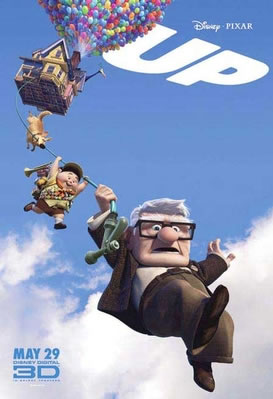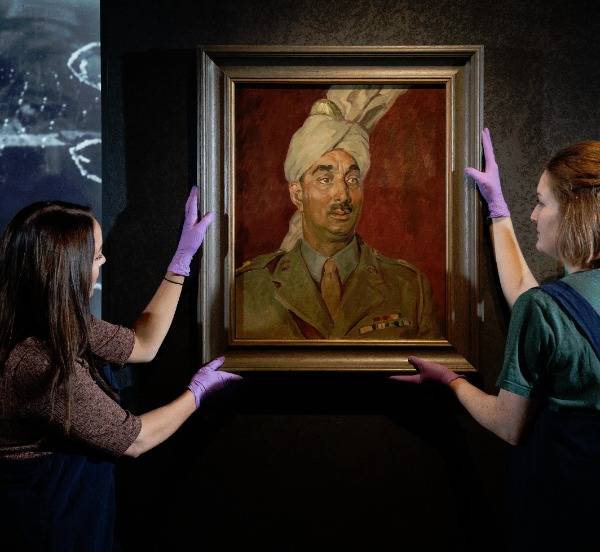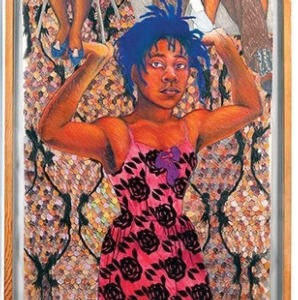 Children’s animation has, thanks to Dreamworks and others, become increasingly schizophrenic over the last five years. Films from Shrek 2 through to Kung Fu Panda have been conceived in the hope that a few references to The Godfather, mixed with the usual slapstick, will result in both kids and parents attending, enjoying and – most importantly – paying lots of money. The results have, predictably and by their nature, been mixed. Pixar has, thus far, steered away from such pandering but, perhaps suitably for the studio that pioneered the whole movement, Up has engaged in these double standards on such a massive level that – for once – perhaps money isn’t the motivation.
Children’s animation has, thanks to Dreamworks and others, become increasingly schizophrenic over the last five years. Films from Shrek 2 through to Kung Fu Panda have been conceived in the hope that a few references to The Godfather, mixed with the usual slapstick, will result in both kids and parents attending, enjoying and – most importantly – paying lots of money. The results have, predictably and by their nature, been mixed. Pixar has, thus far, steered away from such pandering but, perhaps suitably for the studio that pioneered the whole movement, Up has engaged in these double standards on such a massive level that – for once – perhaps money isn’t the motivation.
For, in Up, there is a film that has premiered at the Cannes Film Festival and been compared to, among other things, Milton’s pair of poems, "Paradise Lost" and "Paradise Regained" (an explanation is a well-worded Google away). These comparisons are, to a greater or lesser degree, justified. Up confronts mortality, temptation, responsibility and creation. Indeed, the film’s major location is named “Paradise Falls”. However, alongside these thematic allusions sit a plot comprised of “hilarious” coincidence, dumb, repeated jokes and apple-pie-chirpy characterisations. These you will not find in Milton’s manuscripts.
The film’s greatest problem and its greatest achievement is its infatuation with image. The plot quickly disintegrates and becomes a thread which ties set piece to set piece, and all in the name of getting to that next action sequence. Then again, how can one begrudge that when the sight of an old clapperboard house hoisted aloft by a thousand party balloons (never mind an explanation of how this plan was hatched) is one of the most enduring in recent cinema? Enough has been written about the now famously heart-rending opening sequence, but that is only because it is genuinely well done, and its success lies in director Pete Docter’s ability to make image interact with image, thus telling the story of protagonist Carl Frederickson’s life with a subtlety and verve usually relegated to Pixar's now-obligatory opening short film (Up’s prelude is worth mentioning as possibly the best so far).
And then there is the 3D. Up was pipped to the post by Bolt as Disney-Pixar’s first fully 3D animated film, but Up is clearly the movie that was designed to interact with and comment on this new spin on the medium. Those hoping for a Wizard-of-Oz-style revelation, that will do for 3D what that film did for colour, will be disappointed. Even so, the film does begin with an audience in a cinema, watching an old show reel that is pointedly 2D, before we pan out to the auditorium, in which our hero wears a pair of flying goggles (how clever). But, then, the film ends on old man Carl’s line “I need a new pair of glasses”, and this is the resounding thought: he’s right. If only the new pair could be standard lenses, and something that would allow the audience to enjoy the film on a two-dimensional plane. For that extra dimension, at best, adds nothing and, at worst turns the piece into an undefined blur, that too often breaks out of the confines of the screen before finding that it has nowhere to go.
But then, perhaps that’s deliberate as well. For despite it’s good qualities, Up’s plot takes a sharp and unforgivable turn for the insane about thirty minutes in, and before it’s clear what has happened, the film is a cacophony of giant birds, talking dogs, plateaus, jungles, airships and swordfights. It is, in short, a mess. But what a beautifully constructed and poignant mess.

